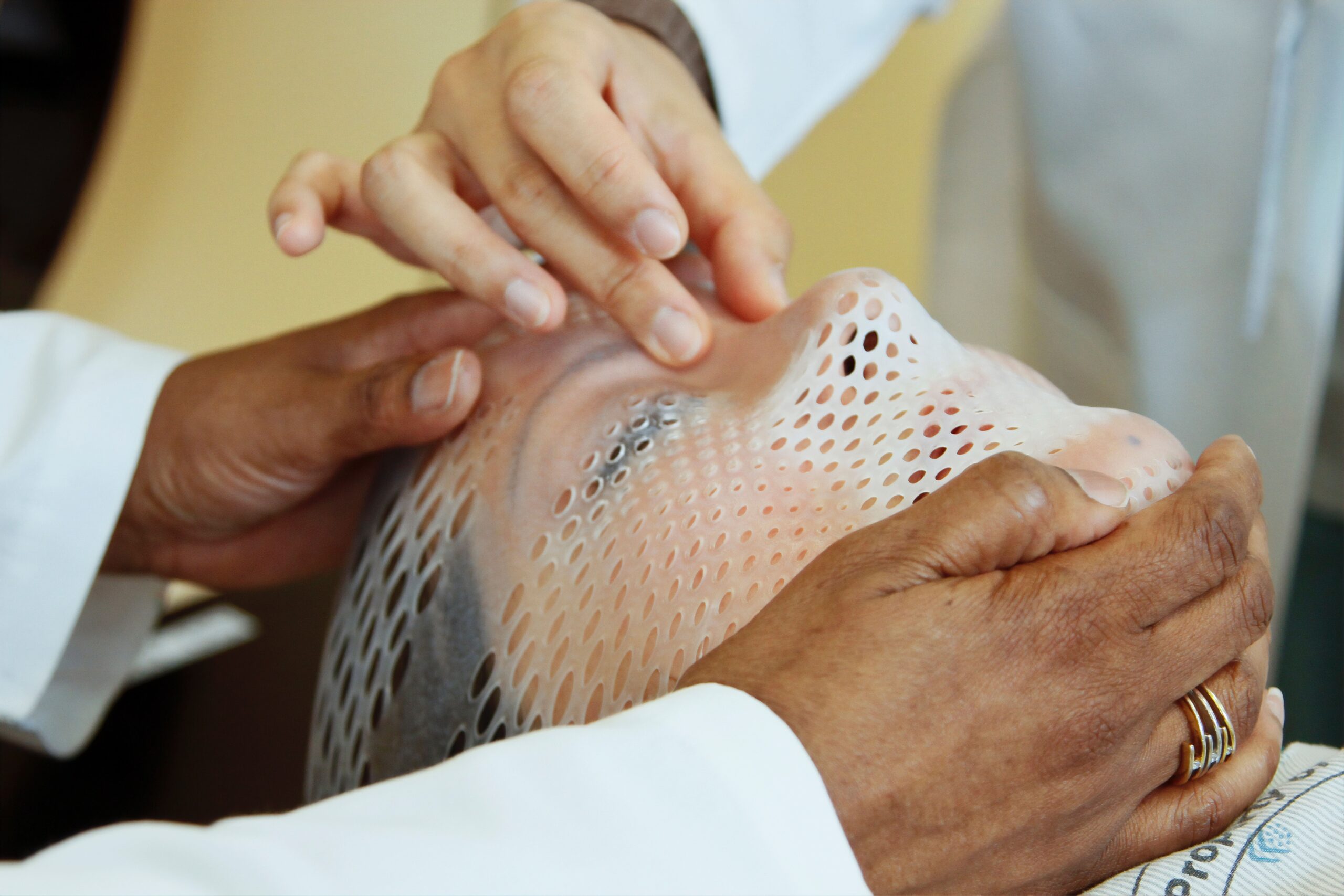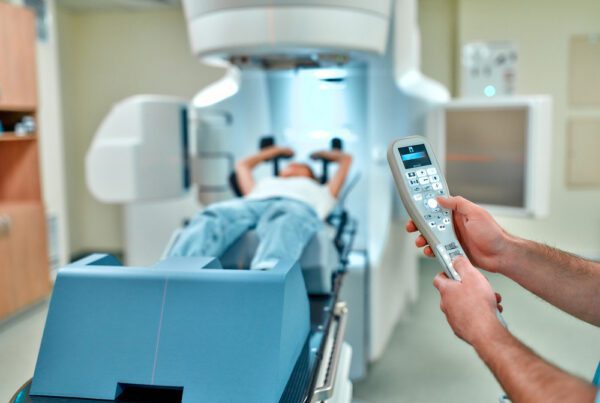Radiotherapy is a common cancer treatment that uses high-energy radiation to destroy cancer cells and shrink tumors. In order to deliver the radiation accurately and effectively, it is crucial that the patient remains in the same position throughout the treatment course. This is where immobilization devices come into play. Immobilization devices are used to keep the patient’s body in a stable, reproducible position during the course of the treatment, thus reducing the risk of movement and ensuring the radiation is delivered precisely to the targeted area.

Example of patient immobilization
There are several types of immobilization devices used in radiotherapy, including baseplates and overlays, vacuum bags, head molds, and masks. Each of these devices has its own unique features and benefits, and choosing the right one for each patient depends on the type of cancer, the location of the tumor, and the patient’s individual needs.
Baseplates and overlays are two of the most commonly used immobilization devices in radiotherapy. Baseplates are made of a lightweight, rigid material, such as plastic or carbon fiber, and are designed to provide a stable platform for the patient’s body. Overlays, on the other hand, are typically made of foam or other soft materials and are designed to provide cushioning and comfort to the patient. The combination of a baseplate and an overlay provides a stable, comfortable platform for the patient during treatment.
Vacuum bags are another popular type of immobilization device used in radiotherapy. These bags are made of a flexible, airtight material, such as plastic, and are designed to be placed over the patient’s body. A vacuum pump is used to remove the air from the bag, which creates a tight, moldable seal around the patient’s body. This helps to keep the patient in a stable position and reduce the risk of movement during treatment.
Head molds are another important type of immobilization device used in radiotherapy. These molds are made of a soft, flexible material and are designed to be placed around the patient’s head. The mold provides a stable, comfortable platform for the patient’s head during treatment, which helps to reduce the risk of movement and ensure that the radiation is delivered precisely to the target area.
Finally, masks are one of the most commonly used immobilization devices in radiotherapy. Masks are made of a lightweight, rigid material, such as plastic, and are designed to fit snugly over the patient’s face. The mask provides a stable platform for the patient’s head and neck, which helps to reduce the risk of movement and ensure that the radiation is delivered precisely to the target area.
The importance of using immobilization devices in radiotherapy cannot be overstated. Without these devices, the patient is at risk of moving during the treatment, which can result in the radiation missing the target area or damaging healthy tissue. The use of immobilization devices ensures that the patient is positioned correctly and remains still during the treatment, which helps to deliver the radiation precisely to the target area and minimize the risk of damage to healthy tissue.
In conclusion, immobilization devices are a crucial component of radiotherapy, helping to ensure that the patient is positioned correctly and remains still during the treatment. There are several types of immobilization devices available, including baseplates and overlays, vacuum bags, head molds, and masks, each of which has its own unique features and benefits. Choosing the right device for each patient depends on the type of cancer, the location of the tumor, and the patient’s individual needs, but all of these devices play an important role in ensuring that the radiation is delivered precisely to the target area and minimizing the risk of damage to healthy tissue.





